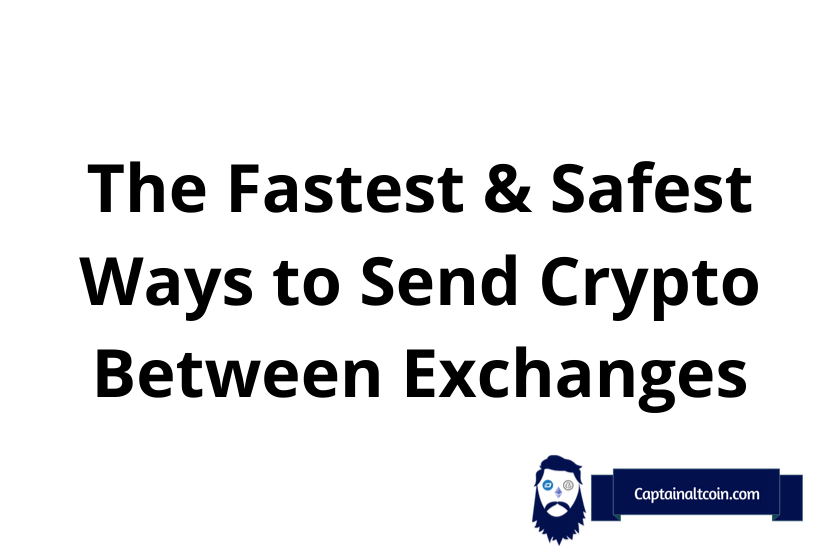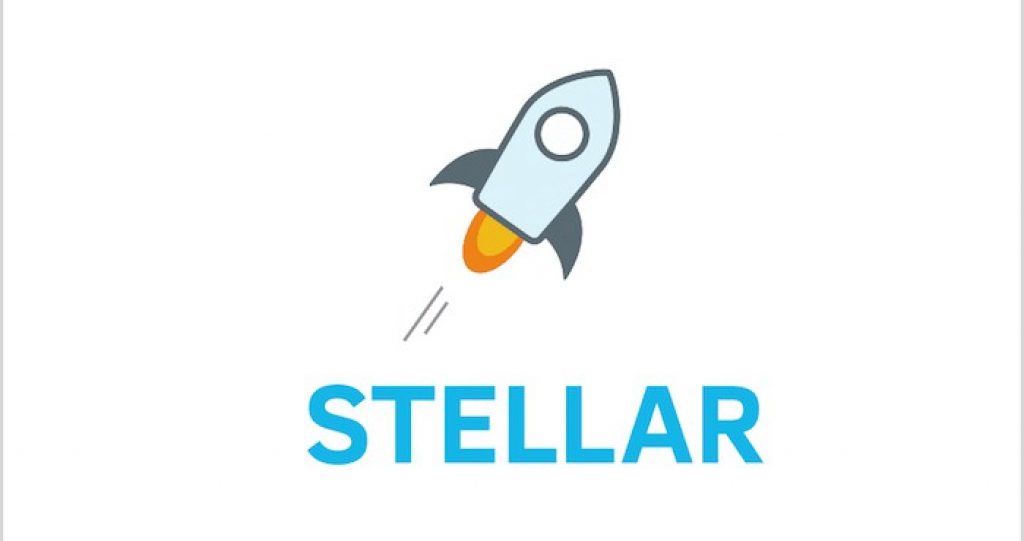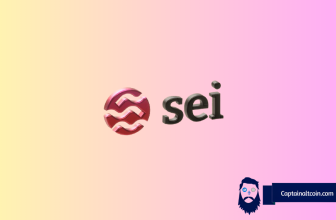
We need security, speed, and low fees when we send cryptocurrency from one exchange to another. Which of these is your top priority will depend on how much crypto you’re sending and where you’re sending it. Let’s take a look at the best options.
What you'll learn 👉
Why We Don’t use BTC & ETH AnyMore
Of the three criteria, the Bitcoin and Ethereum blockchains both excel in security. Speed can be an issue with both, although Ethereum wins that race. The problem with the Ethereum network is the cost, especially at the moment. If you’re sending tens of thousands of dollars, then the gas fees will be a small percentage of your transaction. If, like me, you tend to send a few hundred dollars at a time, then the typical gas fees become prohibitively expensive.
Alternative Coins and Tokens
Back in the day, I was faced with this exact problem and the best solution I found was Dogecoin. The fees were a fraction of a percent, and the final settlement of the transaction took less than a minute. This was in 2017 when Bitcoin network fees were expensive and CryptoKitties were swamping the Ethereum network.
In the four years that have passed, blockchain technology has progressed incredibly. There are much faster blockchains with much higher capacity that charge virtually nothing in fees. Of course, your choice will depend on the sending and receiving exchanges both listing the cryptocurrency. We shall consider the exchanges Binance, Coinbase, and Kraken as these cover the bulk of US-based retail trading volume.
The fastest and cheapest cryptos to send between exchanges are:
- XLM
- XRP
- TRC-20 USDT
- BEP-20 USDT
- NANO
- ADA
- LTC
XLM

Stellar Lumens (XLM) has been around since 2014, and like most of the other cryptocurrencies on this list, its use case is transferring value. According to CoinMarketCap.com, XLM wanted to bank the unbanked and connect people left behind by the legacy financial system. Since then, it seems they have all grown up and acquired mortgages, healthcare, and children. They have shifted to assisting financial institutions to transmit value.
All three of our featured exchanges support the Stellar network, which has a standard network transaction fee of 0.00001 Lumens. With a current price of $0.37, you could make more than 25,000 transactions for one dollar. Effectively, XLM has no network fees.
The speed is great, taking three to five seconds for completion. You might have to account for the exchange running slowly in all the cases I discuss. On a good day, the Stellar network transfers the Lumens with effectively no delay.
Security is top-notch, and I can’t stress this enough. For moving a few thousand dollars between your exchange accounts, it’s fantastic. But, as with all crypto tokens, it’s a trade-off between the three considerations – Speed, Cost, and Security. XLM is super fast and super-cheap at the cost of decentralization and therefore security. I would not hold meaningful wealth on the Stellar network indefinitely.
XRP
The use case for XRP is also centered around money transfer so it should be one of the best ways to send crypto. Coinbase has not yet relisted XRP but the exchanges that are not under the thumb of the SEC continue to support it.
Super-cheap, super-fast, but super-centralized – it’s one of the best. Transactions clear within 2 minutes in my experience, and cost a few cents for a few hundred dollars. The fees could be less than the price fluctuation over the few minutes you wait for completion.
One interesting experience was sending XRP from Binance to HitBTC for an article I was writing. I couldn’t trade or swap my XRP on HitBTC, but the exchange wallet supported it. Strange – I could see it but I couldn’t use it. I send it straight back to my Binance account for a total of $0.43 in fees. The round trip took less than 5 minutes including panicking, understanding, and returning it to my Binance exchange wallet. XRP might not be in the spirit of decentralized cryptocurrency, but it works incredibly well.
NANO

I always wondered what happened to RaiBlocks (XRB). It turns out they rebranded as NANO and now offer near-instant, free transfers. Binance and Kraken support NANO but Coinbase doesn’t. With a market cap of less than a billion, it’s ranked 126th, and being so small, alarm bells start ringing.
However, the Open Representative Voting (ORV) technology makes it one of the least energy-intensive networks. Being green is a great marketing tool these days, so expect to see interest grow in NANO. I may not choose NANO to transfer value, but I might hold a small amount as a longer-term investment. “Acorns and Oaks,” as they say.
USDT on BSC or Tron Blockchain
I use the Binance Smart Chain (BSC) every day. It’s great – fast, cheap, and secure. This is how I transfer my BNB and BUSD, but also any BEP20 tokens I own. I thoroughly recommend the Binance Smart Chain and I use it as my first choice whenever it’s an option.
USDT has lost the respect of the crypto community after some bad PR mistakes. We all use USDC now but USDT still works like a dream. The fees are negligible and completion is within minutes. So what’s not to like? It’s secure from a transfer point of view, but I would be nervous about holding it long-term given the attention it receives from the authorities.
TRON – Forget it. They lost their way years ago. Maybe they’ll be plucked from obscurity by some up-and-coming project, but at this stage I doubt it. TRX has done little since the bear market of 2018, doubling to around ten cents. The least said the better. I Don’t use it.
ALGO
Algorand is from the new breed of blockchain technology. It’s younger, faster, fitter, smarter, and better-looking. You should hold ALGO anyway, but if you don’t it’s a fine way to transfer your crypto. Algorand founder, Silvio Micali from MIT designed a network as a platform for multiple applications, and not specifically as a payment/transfer application.
The wallet is free and the transactions fees are 1/1000th of an ALGO, around 0.2 cents – again, this is effectively free. The network can easily handle 1000 TPS (Transactions Per Second), with final settlement taking about 5 seconds. It’s brilliant and has the backing of some major investment whales.
ADA

Charles Hoskinson’s multi-billion-dollar brainchild, Cardano network, is impeccable in its approach to research and development. This is what will make it succeed in the long term.
ADA is super-efficient as a vector for transferring value between exchanges, just like all the networks on the list. Almost universally supported by exchanges, it’s fast, virtually free, and remarkably secure. Definitely, one to hodl for the future, it’s a great way to move your crypto around without having to convert it first.
Transaction times are around 10 minutes, so it’s not the fastest network, but the fees are typically a few cents for any transaction size. I predict that Cardano will be around much longer than any of us, and I heartily recommend everything about it.
LTC
In contrast, LTC is thoroughly old-school but does that make it bad? Leaving aside Charlie Lee’s dumping of his LiteCoin bags a few years ago, you have to hand it to LTC, it’s stuck around forever. The network fees vary but are currently around 0.02 LTC equating to about $4.50.
This is a lot in cryptocurrency terms, representing about 0.45% for a $1000 transfer. You can expect to wait for 30 minutes for confirmation, which makes it slow. It just looks old-fashioned compared to the newer technologies.
How to Save on Crypto Fees?
Don’t buy your crypto on the exchanges with credit/debit cards, and look for a platform with lower fees. For example, Coinbase trading fees are a rip-off, but CoinBasePro fees are quite reasonable. Shop around.
Exchanges that have a native coin often give large discounts for trading fees if you hold their proprietary token. Binance discounts their already competitive fees if you hold BNB (Binance Coin) in your Binance exchange wallet. BNB has also turned out to be a great investment over the last few years.
A good exchange should charge little to nothing for withdrawing or depositing crypto. You should only be expected to pay the standard network fees. An honest exchange will make its profit from trading fees, not from administrative charges.
Conclusion and Thoughts
For most retail investors, avoiding the time and expense of the BTC and ETH networks as a transfer mechanism is a no-brainer. For very large transactions, it’s not an issue and the extra security provided by the larger networks is worth the lack of efficiency.
Recently a BTC transaction of 1.4 Billion dollars was sent from the US to East Asia for $15 and took 30 minutes to confirm. That’s amazing, but sending $100 for $15 fees in 30 minutes sucks.
Remember, it’s always a trade-off between Speed, Cost, and Security. I would use all the coins and networks in the list apart from Tron (TRX) and Litecoin (LTC).
Pro-Tip – If you’re using a cryptocurrency to send value between exchanges for the first time, send a small test amount first. Once you know it works, you can send the bulk of the crypto in a subsequent transaction. The fees are so low and the transaction times so short that it’s totally worth doing.
Read also:








There should be a huge matrix that outlines the best ways to transfer between all of the exchanges. Such a pain to look them all up.